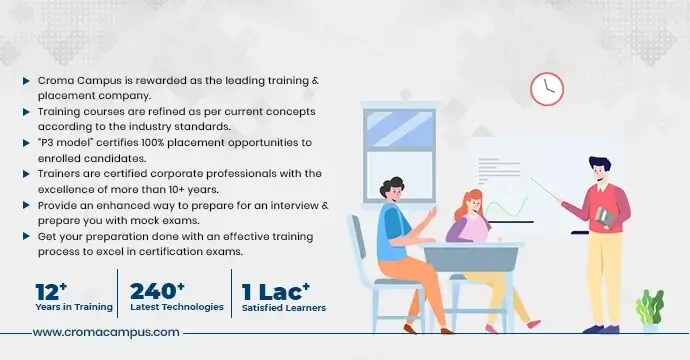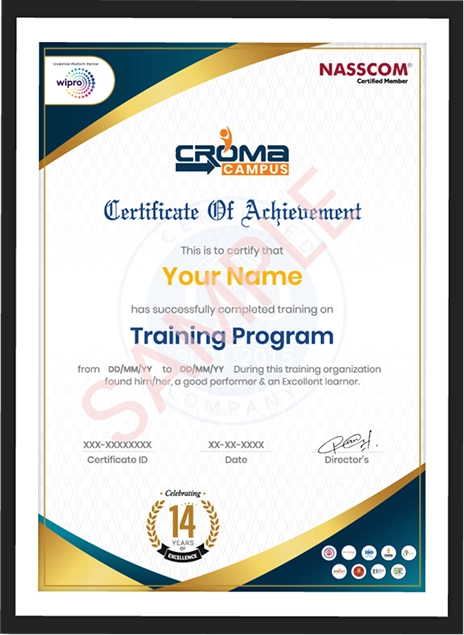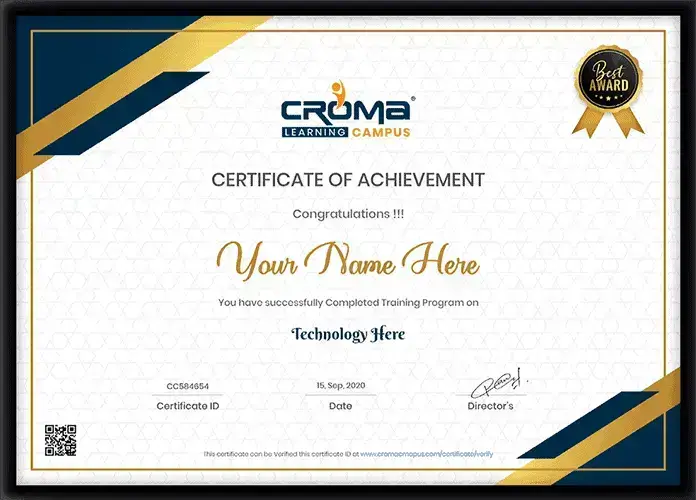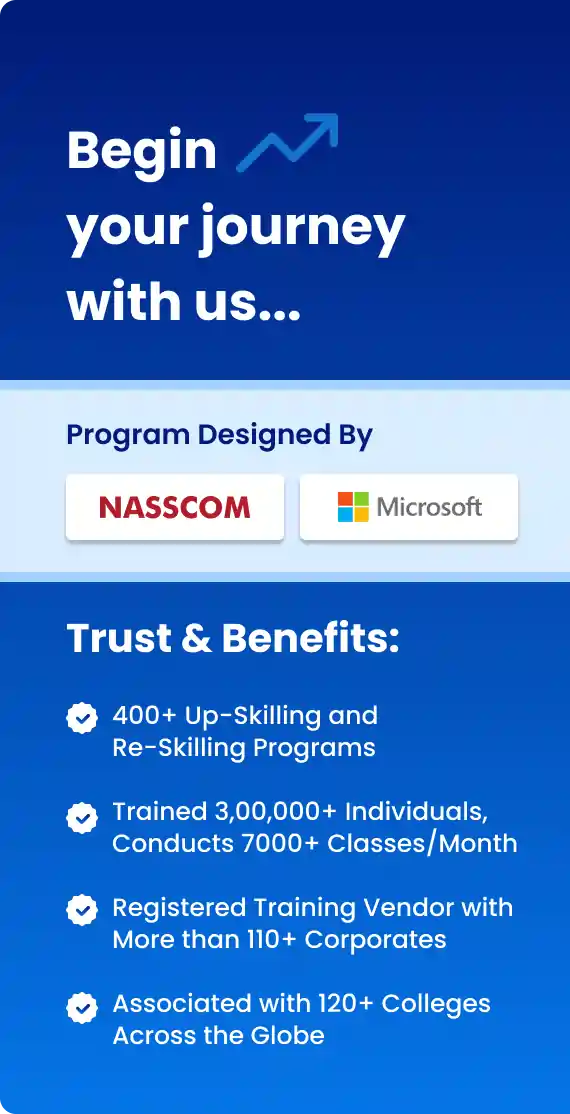Course Design By
Nasscom & Wipro
Home /Full Stack Development/ Java Full Stack Developer Course in Canada
The course covers HTML, CSS, JavaScript, Angular/React for UI, Java, Spring Boot for backend, and MySQL/MongoDB for databases
In collaboration with

95 Hrs.
Duration
Online/Offline
Format
LMS
Life Time Access
we train you to get hired.


Expert Back-End Development
Database Administration Skills
RESTful Services
DevOps Practices
Security Best Practices
Agile Methodologies
Soft Skills Training
National Average: National average salary for Java Full Stack Developers in Canada is around CAD $82,478 per annum.
City Variations: Salaries tend to be higher in technology cities. In Toronto, approximately CAD $64,431 annually, and in Vancouver, approximately CAD $47,434 annually.
Industry Impact: Banking, health, and e-commerce industries would traditionally pay more on the first salary because their applications are mission-critical and sophisticated.
Skill Impact: Familiarity with other technology like cloud services (AWS, Azure) or DevOps tools could lead to higher pay.
Junior Developer: Graduates would be employed as junior developers first and work in independent application development domains under guidance.
Mid-Level Developer: Senior experts take care of more intricate jobs, such as application architecture design and mentoring junior developers.
Senior Developer/Team Lead: Seniority is associated with project management and strategic-level decision-making tasks.
Architect/Consultant: Senior experts can transition to jobs that include designing enterprise-level solutions and consultancy services.
DevOps Engineer: Specialization in merging development and operations to enhance deployment effectiveness.
Cloud Solutions Architect: Design and maintain elastic cloud-based applications on the AWS or Azure platform.
Data Engineer: Handle and process data, employing big data technology.
Java's Timeless Relevance: Java continues to be an option for application development on an enterprise level. Its stability, scalability, and large base make it appealing to firms, and hence the demand for Java developers continues unabated.
Alignment with Industry Trends: The curriculum combines contemporary tools and methodologies such as DevOps practices, cloud computing, and microservices architecture. Synchronization with new trends in the industry improves the employability of the graduates.
Career Advancement Opportunities: Full stack developers have quicker career development, taking into account their jack-of-all-trades abilities to perform jack-of-all-trades activities and responsibilities within organizations.
Enabling Learning Environment: Organizations providing the course provide learners with learning environments like career guidance, mentorship, and placement opportunities, thus making it easier for selected candidates to learn.
Global Recognition: Certifications earned after taking Java Full Stack Training in Canada receive global recognition, and graduates can look for opportunities abroad.
Career Designations to Expect: Full Stack Developer: Engaged in end-to-end development, with front-end user interfaces and back-end logic management.
Back-End Developer: Deals with server-side app logic, database interaction, and API creation.
Front-End Developer: Deals with the creation of responsive and interactive user interfaces.
DevOps Engineer: Sees to automating and optimization of development and deployment.
Software Engineer: Engaged in software system development, design, and maintenance.
Information Technology (IT) Services: It services of IT companies, consulting, and software development need full stack developers to provide end-to-end services to clients.
Finance and Banking: Banks need smart and reliable solutions for trading interfaces, online banking, and finance analytics, creating the need for developers.
Healthcare: Healthcare uses technology to develop patient management systems, telemedicine websites, and health data analysis, presenting opportunities to developers.
E-commerce: Internet commerce businesses rely on secure and friendly platforms for transactions, inventory, and consumer interaction.
Education Technology (EdTech): The rise in use of online educational platforms and virtual classrooms has led to a demand for developers to design an interactive and extensible solution.
Government and Public Sector: Government bodies use digital services for citizens, and developers are commissioned to create and update such applications.
Telecommunications: Telecommunications companies develop and maintain customer portals, billings systems, and network management software with full stack developers.
Course Completion Certificate: Which attests to your presence in the course.
Project Work Certificate: Highlighting your hands-on working experience.
GitHub Portfolio: To showcase your programming skills to your potential employers.
Interview Preparation Support: To help you prepare for job interviews.
Personalized Learning Paths: Customized to suit individual learning patterns.
Interactive Sessions: Interactive sessions with live examples.
Global Acceptance: The certificate is accepted by Canadian recruiters as well as global hiring firms.
Ongoing Support: Continuous support even after course completion.
we train you to get hired.

By registering here, I agree to Croma Campus Terms & Conditions and Privacy Policy
Introduction
HTML5
CSS 3
JavaScript
Bootstrap 5
jQuery
Concept of Modern JavaScript (ES6)
React Modules
Arrays
Strings
Linked Lists
Stacks & Queues
Recursion
Hashing
Trees
Introduction:
Java Architecture
Language Fundamentals
Methods in Java
OOPS
Packages:
Reflection API:
Garbage Collection:
Collection Framework
Java 8 features
JSP and Servlet
JDBC
Hibernate Framework
Spring and Spring Boot
Introduction to AI & ML
Weka ML for Beginners
Encog Lightweight Neural Networks in Java
DL4J Deep Learning in Java
Spring AI API Overview Modern AI Services
+ More Lessons
Course Design By
Nasscom & Wipro
Course Offered By
Croma Campus
Stories
success
inspiration
career upgrade
career upgrade
career upgrade
career upgrade
You will get certificate after
completion of program
You will get certificate after
completion of program
You will get certificate after
completion of program
in Collaboration with

Empowering Learning Through Real Experiences and Innovation
we train you to get hired.
Phone (For Voice Call):
+91-971 152 6942WhatsApp (For Call & Chat):
+919711526942Get a peek through the entire curriculum designed that ensures Placement Guidance
Course Design By
Course Offered By
Ready to streamline Your Process? Submit Your batch request today!

This was a wonderful experience to learn MEAN stack programming skills at Croma Campus. The instructor-led live classes and virtual classrooms will make you more confident for the course. The training program is designed proactively and highly job-focused too Read more...

All the trainers at Croma Campus are highly supportive and good at communication level. I am relaxed even if I miss a class because I can see the same into LMS recorded section and same class can be booked in other batches too Read more...

My SQL training at Croma Learning Campus was just the best decision that I have taken so far. It helped me to master SQL fundamentals, database concepts, and basic computer skills. SQL is a little tough to learn by beginners but a big thank to the extraordinary team that helped me to learn everythin Read more...

Hi, I have successfully completed Machine Learning from Croma Campus and I am very confident because I have improved my skills and knowledge So thank you Croma Campus. Read more...

Hi, myself Raghav Gupta from Haryana. I have completed my graduation in the engineering. There are less opportunity there in my field. And my keen interest in developing and Croma campus helped in achieving my goals. This institution has given me detailed knowledge. My certification, knowledge and s Read more...

Hi, my name is Prakash Mishra I have recently completed my MERN Certification from Croma Campus. The learning experience which I got during training is incomparable. It has world-class infrastructural facilities. Read more...

Croma Campus MERN Certification training is best in Delhi/NCR. Overall, the training center helps out in imparting out new skills in the student/ learner which helps out in personality development. Read more...
No, the course begins from the beginning and then proceeds step by step.
Yes, working individuals are also free to register for the course with flexible time tables.
Yes, we help you establish a GitHub portfolio of your projects.
Yes, we help you obtain internships.
The course curriculum is industry-demand oriented, making you employment ready.

Highest Salary Offered
Average Salary Hike
Placed in MNC’s
Year’s in Training

fast-tracked into managerial careers.
Get inspired by their progress in the
Career Growth Report.
FOR QUERIES, FEEDBACK OR ASSISTANCE
Best of support with us





An OTP on your submit Mobile No has been shared.please check and submit OTP

We’re the best training provider with rigorous industry-relevant programs designed and delivered in collaboration with world-class faculty, industry & Infrastructure.
Share some of your details and we will be in touch with you for demo details, and know about Batches Available with us!
By registering here, I agree to Croma Campus Terms & Conditions and Privacy Policy



Enter your email and phone number
For Voice Call
+91-971 152 6942For Whatsapp Call & Chat
+91-9711526942Talk to Career Counsellor

Stay ahead in your career with real-time salary updates.
By registering here, I agree to Croma Campus Terms & Conditions and Privacy Policy

We’re the experts in web design and development for the start up next door and the fortune 500.

What Benefit You will get from this Program
By registering here, I agree to Croma Campus1 Terms & Conditions and Privacy Policy
Share some of your details and we will be in touch with you for demo details, and know about Batches Available with us!


